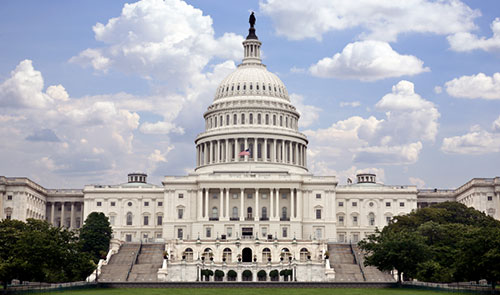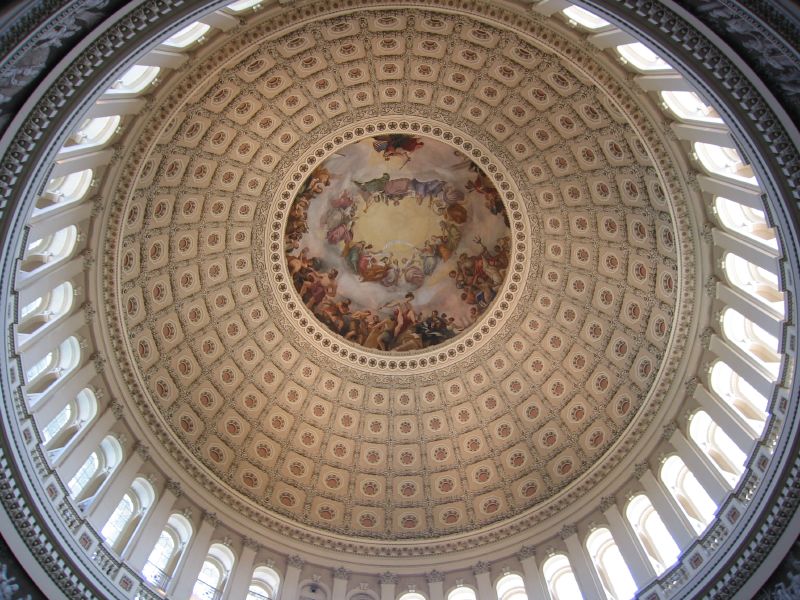
(By: Aubrey Schultz)
Location: East Capitol Street, NE and 1st Street
Visiting Hours: 8:30am to 4:30pm
Website: www.visitthecapitol.gov
Phone: (202) 226-8000
Capitol Hill is one of Washington D.C.'s most historic districts. Pierre L'Enfant, a French-born American architect and civil engineer best known for designing the layout of the streets of Washington, D.C., described the crest of the hill as "a pedestal waiting for a monument" and shortly afterward, in 1793, George Washington laid the first cornerstone of the United States Capitol building, which now stands facing the city and the National Mall. Behind the Capitol building is the Supreme Court and the Library of Congress. Union station, at the northern end of Capitol Hill, is not only Washington D.C.'s main rail terminal, but also one of the most popular tourist attractions due to its recent renovation.
The United States Capitol is a symbol of the American people and their government, the meeting place of the nation's legislature. Inside is also an important collection of American art, and it is an architectural achievement in its own right. It is a working office building as well as a tourist attraction visited by millions every year.
Like many buildings, monuments, and memorials in Washington D.C., the design for the Capitol was the result of a design competition. The challenge to design the United States Capitol was won by Dr. William Thornton for his simple Greek style. This was elaborated further by other architects before construction began in 1793. Over the following decades large sections of the Capitol were completed, although some were destroyed by British troops in 1814. The Capitol was finally completed in 1826. Since that time, the United States Capitol, and its magnificent dome, have become international symbols of our representative democracy.

The Rotunda is 96 feet in diameter and rises 180 feet 3 inches to the canopy, and is visited by thousands of people each day. It is also used for ceremonial events authorized by concurrent resolution, including the lying in state of honored people.
In preparation for our trip, we contacted Idaho Congressman Mike Simpson's office in Washington D.C. and requested a tour of the U.S. Capitol building. I am so happy that on Thursday, April 28th we will get to go inside this magnificent building.

Your family is in for a treat there. Very impressive city, with so much history in it.
ReplyDeleteI am SO excited (and a bit envious) of y'all!! I'll be praying for safe travel for you tomorrow. I am HOPING you will be blogging during your trip. I can't wait to hear all about it!
ReplyDelete